Why You Should Visit Georgia’s Paradise Gardens, A Hidden Gem For Folk Art

Lisa Cericola
- Oops!Something went wrong.Please try again later.
As my husband drove along the bumpy residential road to Paradise Gardens, it didn’t feel like we were headed in the right direction. I wasn't sure what I was looking for, but this quiet neighborhood of small homes didn’t look like the place where you would find one of the most important collections of folk art in America. Then we turned a corner, and suddenly the weird and wonderful world of Howard Finster came into view.
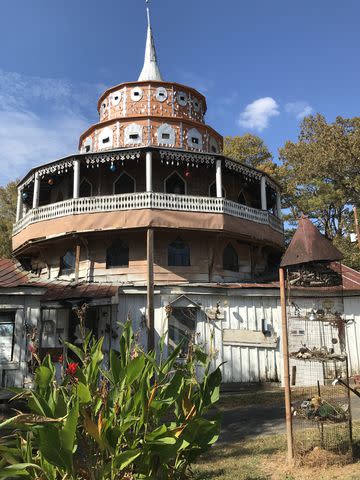
Lisa Cericola
Welcome To Paradise
Howard Finster’s Paradise Gardens has been on my travel list for years. My family and I happened to be in Atlanta for the weekend, so we decided to make the two-hour trip out to the small town of Summerville, Georgia, to see Finster’s former home, which is now a museum and garden dedicated to his life’s work.
“Museum” and “garden” don’t begin to describe this place. Entering the small welcome center, we were greeted by a friendly orange cat, and a helpful volunteer, who gave us a map. The space, a former house, contains images and information about Finster and his remarkable life, exhibits by other artists inspired by him, and a gift shop. All typical stuff—well, maybe not the cat—and then we stepped outside.
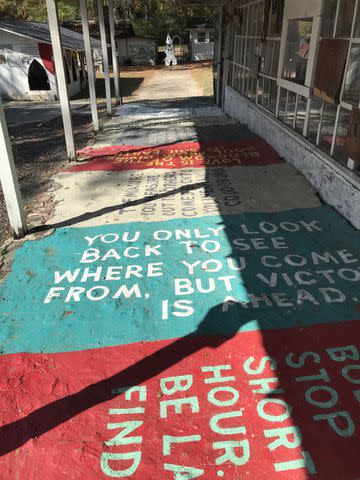
Lisa Cericola
Concrete paths painted with messages and embedded with a mosaic of chipped dishes, glass, tiles, and other items weave around the property. Paradise Gardens is self-guided, and the walkways lead to several small buildings, including his former workshop, and Finster's notable pieces. Paintings are everywhere—on the sides of buildings, on plywood cutouts, and in a long, tunnel-shaped gallery. A rusted Cadillac is covered with portraits of friends and celebrities. A tower of corroded bicycle parts is home to overgrown vines and small birds. A small house is covered in a sparkling mirrored mosaic on the inside and outside. And then there’s The World’s Folk Art Church, a twelve-sided building Finster designed and built to look like a wedding cake.
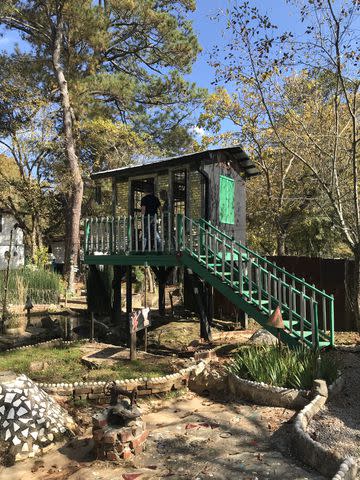
Lisa Cericola
My son darted around the property, ducking into a work shed haphazardly filled with tools, kitchen items, art supplies, old dolls, and all manner of objects. To Finster, almost anything could become part of a new creation—and almost anyone could be a subject. He incorporated his religious beliefs into much of his work, but he also painted stars like Elvis Presley and Marilyn Monroe, presidents like Harry Truman and George Washington, and American iconography like Mickey Mouse and the Coca-Cola bottle.
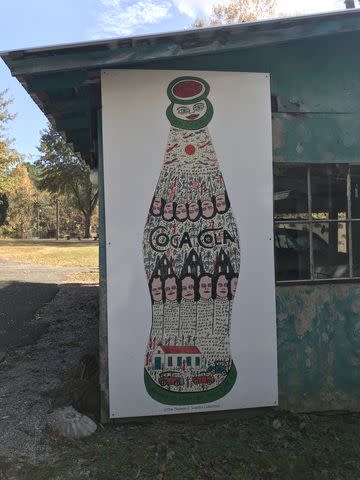
Lisa Cericola
Each step around the property reveals something new to see—you could spend all day here and not take in the full scope of Finster’s work. We left Paradise Garden with a sense of wonder and a new way of thinking. Which is exactly what a great museum should do.
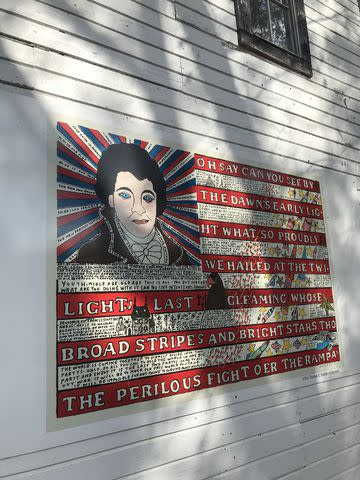
Lisa Cericola
Who Was Howard Finster?
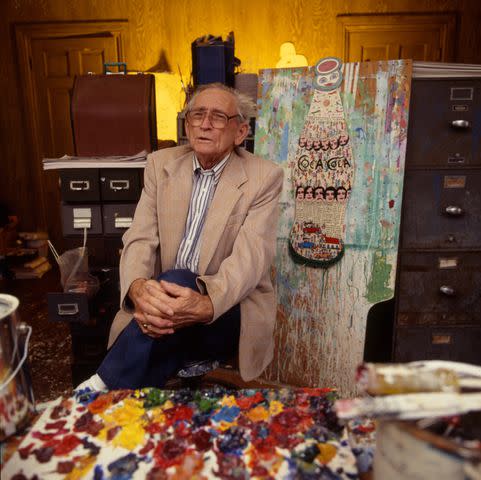
Anthony Barboza/Getty Images
Finster was born in Valley Head, Alabama in 1916, and became a Baptist preacher and local repairman. People came to him to fix things like bicycles and lawn mowers, and he was fascinated by tools and man-made objects, but he had a creative side, too. In the 1940s, he created the Plant Farm Museum, a roadside attraction to honor inventors that was a collection of self-constructed models of buildings, sculptures, as well as objects.
In 1976, while painting a repaired bicycle, Finster said he had a vision from God. A dab of white paint on his finger formed a face that spoke to him: “Paint sacred art.” Finster didn’t think he had any talent, but he took this message seriously, making art for the rest of his life. Many of these paintings, with Bible verses and biblical imagery, were designed to share his faith in the word of God. Soon, he had amassed thousands of paintings (Finster numbered each one), as well as sculptures. As his body of work grew, so did the Plant Farm Museum, which was eventually called Paradise Gardens.
By the 1980s, word had spread about Finster and his art, including the World Folk Art Church. Before the Georgia rock band REM made it big, they collaborated with Finster on an album cover and filmed a music video at Paradise Gardens, which brought even more attention to his work and mission. A few years later, another now-iconic band, Talking Heads, followed suit with their album Little Creatures. Eventually, Finster’s work was shown in galleries all over the world. Even now, years after his death in 2001, he is still recognized as one of the most prolific self-taught artists in America.
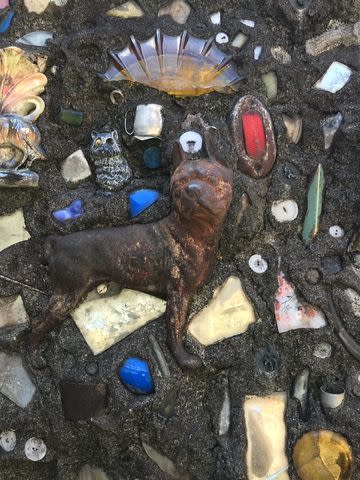
Lisa Cericola
What Is Paradise Gardens?
Paradise Gardens is the former home of Howard Finster and the site of his life’s work. The four-acre property contains structures like his work shed, the World Folk Art Church, and the Mirror House as well as sculptures, paintings, found objects, and other things Finster created or collected. While the Paradise Garden Foundation works to preserve and maintain the garden and everything in it, the structures and art are outside and show the wear of time and weather.
Where Is Paradise Gardens?
Paradise Gardens is located in the small town of Summerville in northwest Georgia. It is open to the public year-round Tuesday to Sunday from 11:00 AM to 5:00 PM EST, rain or shine. The Paradise Garden website has detailed instructions on how to get there. There are also three AirB&B rental properties at Paradise Gardens if you want to extend your visit.
Related: The Prettiest Small Towns In Georgia
For more Southern Living news, make sure to sign up for our newsletter!
Read the original article on Southern Living.

